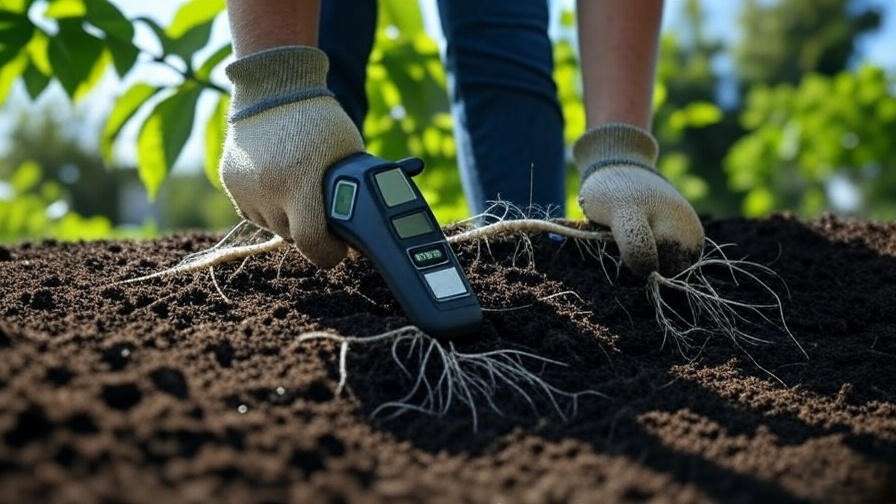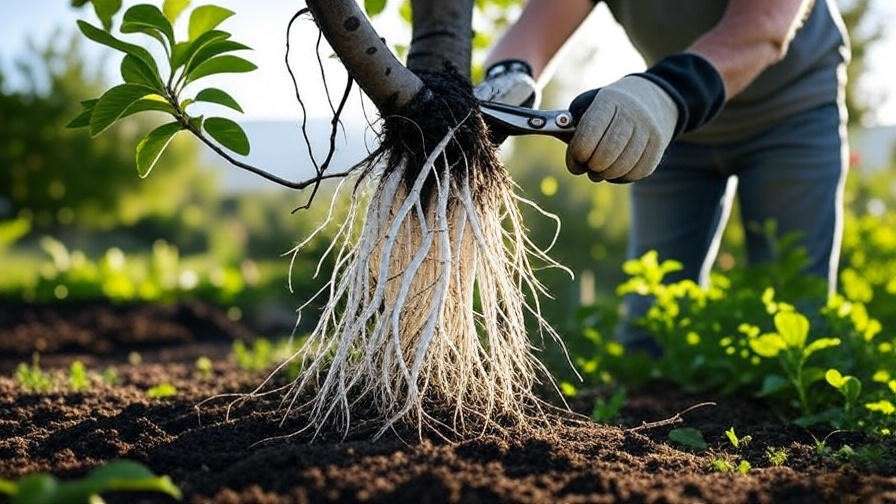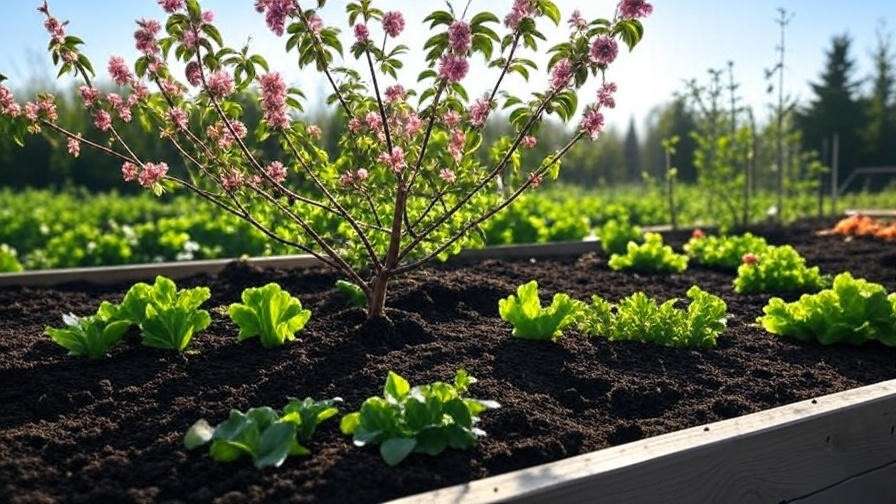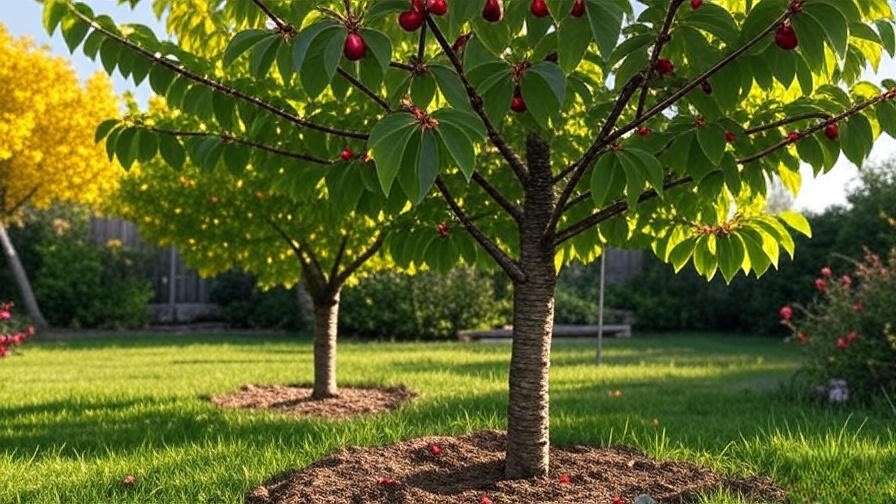Picture this: your beloved cherry tree, once bursting with vibrant blossoms and juicy fruit, now stands droopy, with yellowing leaves and soggy soil that smells faintly of decay. Your heart sinks—could this be the end? Don’t despair! How to deal with cherry tree overwatering and root problems is a challenge many gardeners face, but with the right knowledge, you can save your tree and restore its glory. As a horticulturist with over a decade of experience in tree care, I’ve helped countless gardeners revive their cherry trees from the brink. Backed by research from trusted sources like the Royal Horticultural Society and university extensions, this comprehensive guide will walk you through diagnosing, treating, and preventing overwatering and root issues. Ready to bring your cherry tree back to life? Let’s dive in! 🌱
Understanding Cherry Tree Overwatering and Root Problems 🌧️
What is Overwatering, and Why is it Harmful? 💧
Overwatering occurs when a cherry tree’s soil remains too wet for too long, depriving roots of oxygen. Cherry trees, with their shallow root systems, are especially vulnerable. Excess moisture suffocates roots, disrupts nutrient uptake, and invites fungal pathogens. The result? Root rot, stunted growth, and, in severe cases, tree death. According to Cornell University’s agricultural extension, overwatering is a leading cause of fruit tree decline, with cherry trees particularly susceptible due to their preference for well-drained soils.
Common Causes of Overwatering in Cherry Trees 🌳
Several factors contribute to overwatering:
- Poor drainage: Clay-heavy soils or low-lying planting sites trap water, creating a waterlogged environment.
- Overzealous watering: Gardeners, eager to nurture their trees, may water too frequently, especially in humid climates.
- Inadequate pot drainage: Potted cherry trees suffer when containers lack sufficient drainage holes or use compacted soil.
- Seasonal factors: Heavy spring rains or poorly calibrated irrigation systems can exacerbate waterlogging.
Understanding these causes helps pinpoint why your tree is struggling, setting the stage for effective solutions.
Recognizing Root Problems Linked to Overwatering 🕵️♀️
Overwatering manifests in telltale signs above and below ground. Above ground, look for:
- Yellowing or wilting leaves, even in wet soil.
- Leaf drop outside of autumn.
- Stunted fruit production or small, tasteless cherries.
Below ground, root problems are harder to spot but critical to diagnose:
- Mushy, blackened roots: Healthy roots are firm, white, and fibrous; overwatered roots are soft, dark, and may smell foul.
- Fungal growth: A musty odor or white, cottony growth near the root zone signals pathogens like Phytophthora, a common root rot culprit.
Early detection is key to saving your tree, so let’s explore how to diagnose these issues accurately.
Diagnosing Overwatering and Root Issues 🩺
How to Check for Overwatering 🌊
To confirm overwatering, start with the soil:
- Test soil moisture: Insert a finger 2–3 inches into the soil near the tree’s base. If it feels soggy or water pools, overwatering is likely. For precision, use a moisture meter (available at garden centers for $10–$20).
- Assess drainage: After rain or watering, check if water pools around the tree for more than a few hours. Poor drainage is a red flag.
- Evaluate soil type: Clay soils retain water longer than loamy or sandy soils. A soil test (kits available from local extensions) can confirm composition.

Oregon State University recommends maintaining soil moisture at 20–30% for cherry trees, depending on the season, to avoid water stress.
Inspecting Roots for Damage 🔍
To check for root damage:
- Carefully excavate: Dig a small area around the tree’s base, about 6–12 inches deep, to expose feeder roots. Use a trowel to avoid damaging healthy roots.
- Examine root health: Healthy roots are firm and white; damaged roots are soft, dark, or slimy. A foul odor indicates rot.
- Look for fungal signs: White, thread-like growth or mushrooms near the base suggest fungal infections like Armillaria or Phytophthora.
If more than 50% of the roots appear damaged, consult a certified arborist. The International Society of Arboriculture (ISA) offers directories to find local experts.
Solutions to Fix Overwatering and Root Problems 🛠️
Immediate Steps to Address Overwatering 🚨
If your cherry tree is overwatered, act fast:
- Stop watering: Halt all irrigation for at least 7–10 days to let the soil dry out.
- Improve drainage: Aerate the soil with a garden fork to increase oxygen flow. For severe cases, mix in coarse sand or organic matter (e.g., compost) to enhance drainage.
- Repot potted trees: For container-grown cherry trees, remove the tree, trim damaged roots, and repot in a well-draining mix (e.g., 50% potting soil, 30% perlite, 20% compost). Ensure pots have multiple drainage holes.
Treating Root Rot and Fungal Infections 🧪
Root rot requires prompt action:
- Prune affected roots: Using sterilized shears, cut away mushy or blackened roots, leaving only healthy, white ones. Disinfect tools with rubbing alcohol between cuts to prevent spreading pathogens.
- Apply fungicides: Organic options like copper-based fungicides or neem oil can suppress Phytophthora and other fungi. Follow label instructions, typically applying as a soil drench every 7–14 days.
- Improve air circulation: Clear debris and weeds around the tree base to reduce moisture buildup and fungal growth.
Case Study: A gardener in Washington state revived a ‘Bing’ cherry tree by pruning 30% of its rotted roots and applying a copper fungicide. Within two seasons, the tree resumed fruit production, as documented by the Washington State University Extension.

Rehabilitating the Tree 🌱
To nurse your cherry tree back to health:
- Adjust watering: Water only when the top 2 inches of soil are dry. For young trees (1–3 years), provide 1–2 gallons weekly in dry weather; mature trees need 5–10 gallons, adjusted for rainfall.
- Fertilize cautiously: Use a balanced, slow-release fertilizer (e.g., 10-10-10 NPK) in early spring to support recovery without overwhelming the tree. Avoid high-nitrogen formulas, which stress weakened roots.
- Mulch wisely: Apply a 2–3 inch layer of organic mulch (e.g., wood chips or bark) around the tree, keeping it 6 inches from the trunk to prevent rot. Mulch regulates soil moisture and temperature.
Preventing Future Overwatering and Root Problems 🛡️
Optimizing Soil and Drainage 🏞️
Healthy soil is the foundation of a thriving cherry tree:
- Test and amend soil: Conduct a soil test through your local extension service (cost: $15–$30) to check pH and drainage. Cherry trees prefer slightly acidic soil (pH 6.0–6.8). Add compost or gypsum to improve heavy soils.
- Choose the right site: Plant cherry trees in sunny, elevated spots with good drainage. Avoid low-lying areas prone to water pooling.
- Raised beds for problem soils: If drainage is poor, build a raised bed (12–18 inches high) filled with a loamy mix.

The University of California’s agriculture division notes that proper site selection can reduce overwatering issues by up to 70%.
Establishing a Proper Watering Routine 💦
A tailored watering schedule prevents recurrence:
- Young trees (1–3 years): Water weekly, providing 1–2 gallons in dry conditions. In rainy seasons, skip watering if soil is moist.
- Mature trees (4+ years): Water every 10–14 days, delivering 5–10 gallons, depending on climate. In arid regions, increase frequency during summer.
- Use tools: Install drip irrigation or soaker hoses to deliver water slowly and evenly, reducing runoff.

| Tree Age | Weekly Watering (Dry Weather) | Notes |
|---|---|---|
| 1–3 years | 1–2 gallons | Check soil moisture weekly |
| 4+ years | 5–10 gallons | Adjust for rainfall |
Monitoring Tree Health 📊
Regular checks keep problems at bay:
- Weekly inspections: Look for yellowing leaves, wilting, or soggy soil. Address issues immediately.
- Seasonal maintenance: Prune dead branches in late winter, aerate soil in spring, and fertilize sparingly in early summer.
- Smart tools: Use apps like Plantix or soil moisture sensors (e.g., Xiaomi Flora) to monitor conditions in real time.
Additional Tips for Cherry Tree Care 🍒
- Companion planting: Grow marigolds or clover near cherry trees to improve soil structure and deter pests.
- Seasonal care calendar:
- Spring: Fertilize, prune, and check for early overwatering signs.
- Summer: Water deeply during dry spells; monitor for pests.
- Fall: Mulch to protect roots from cold; reduce watering.
- Winter: Inspect for structural damage; avoid watering dormant trees.
- Organic pest control: Spray neem oil or introduce ladybugs to manage aphids, which target stressed trees.
FAQs About Cherry Tree Overwatering and Root Problems ❓
- Can an overwatered cherry tree be saved? Yes, if caught early. Trees with less than 50% root damage have a high recovery rate with proper care.
- How often should I water my cherry tree? Water young trees weekly (1–2 gallons) and mature trees every 10–14 days (5–10 gallons), adjusting for rainfall.
- What’s the best soil mix for potted cherry trees? Use 50% potting soil, 30% perlite, and 20% compost for optimal drainage.
- How do I know if my tree has root rot? Look for mushy, dark roots, a foul odor, or wilting leaves despite wet soil.
- Are there cherry tree varieties more resistant to overwatering? ‘Stella’ and ‘Lapins’ tolerate wetter soils better than ‘Bing’ or ‘Rainier.’
Conclusion: Revive and Protect Your Cherry Tree 🌸
Overwatering and root problems can threaten your cherry tree, but with timely action, you can save it and prevent future issues. By diagnosing waterlogging, treating root rot, and adopting smart watering and soil practices, you’ll restore your tree’s health and enjoy its beauty for years. Start today: check your tree’s soil, adjust your watering routine, and share your progress in the comments below! For more tips, explore our articles on “Best Cherry Tree Varieties for Small Gardens” or “How to Prune Cherry Trees”. Need personalized advice? Contact a local arborist through the ISA’s directory. Your cherry tree is counting on you! 🌳













